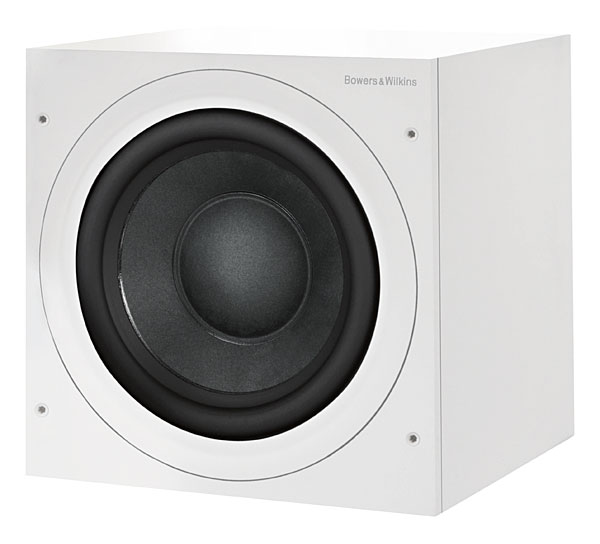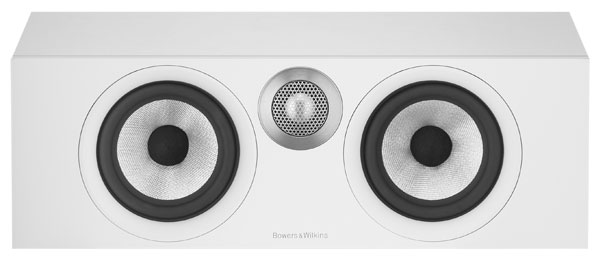Hey, where are the frequency responses of 603s? Why have you stopped with showing us those?
Bowers & Wilkins 603 Speaker System Review Page 2

Setup
The ideal positions for a 5.1 speaker rig in my room have been pretty well established over the years, and the 600 Series system delivered good results using the same basic setup as my resident PSB Synchrony speakers. The 603 towers were situated about 3 feet from the side walls and 18 inches from the front wall, and the HTM6 was placed on a tall stand under my projection screen and centered between the towers. The 606 speakers were on the side walls slightly behind and about a foot higher than my ears in the listening position, although their 12.8-inch depth and rear-facing port meant that they ended up sticking out a few inches further into the room and closer to the listening position than in my normal setup. The ASW610XP near the room’s front left corner had its driver angled into the room so it faced toward the listening seat. For most of my listening I powered the system using a Denon AVR-X8500H A/V receiver with all of its room correction turned off, but I also used a Peachtree Audio integrated amp to evaluate both the 603 and 606 used as stereo pairs.
 Music Performance
Music Performance
Like always, I started my evaluation by listening to the 603 towers solo with stereo music. Right out of the gate the engaging, upfront sound dispelled any notion that traditional British reserve played a part in the voicing of these speakers. Listening via the excellent new (to the U.S.) Qobuz streaming service, I played Thomas Dolby’s Airhead over the 603s, and they nailed the track’s deep synth bass line and fast dynamic attack. While bass from the 603 alone was solid and powerful, blending its output with the ASW610XP sub demonstrated that the system could go even deeper with the right program material.
I expect the new Continuum cone is responsible for this, but the 603’s ability to deliver midrange detail and texture is what really stood out for me. Playing “Faithful” from jazz piano prodigy Joey Alexander’s Eclipse album, the soft percussive attack of his touch on the piano, and the wide palette of tonal colors from drummer Eric Harland’s various cymbals, sounded particularly impressive.
The flipside to the 603’s upfront clarity is that some less-than-great-sounding recordings could skate a bit too close to the edge that separates forwardness and aggressiveness. For instance, Greta Van Fleet’s “Highway Tune” sounded good when played at lower volume settings, but once I turned up the wick it would start to sound a touch too thin and upfront.
Movie Performance
Seeing as I was rocking a simple 5.1 setup with no Atmos or back surround channels to consider, I pulled out some old movies with reference 5.1-channel soundtracks and checked out favorite scenes like the plane crash from Fight Club. I had forgotten how good envelopment can be even without umpteen speakers spread all over the room. The sudden swirling of the rushing wind as the plane breaks apart in this sequence will certainly get your attention, and the system shook it off without breaking a sweat. If I were to get nitpicky—and hey, that’s my job—I’d say that the HTM6 center channel speaker didn’t quite keep up with the 603s either tonally or dynamically. Edward Norton’s dialog heard through the HTM6 had a very slight cupped hands coloration. On the other hand, the 606 speakers in the surround positions matched the tonality of the 603 towers pretty much perfectly.

Conclusion
The Bowers & Wilkins 600 Series has sat at the intersection between high-performance and high-value for more than three decades, delivering a sizable slice of what the company’s top speakers can do at a much more affordable price. That tradition continues with the new 600 Series, although the focus of the new line seems to be mostly on music, with movie soundtracks and surround music taking a bit of a back seat. Maybe such changes are due to the influence of the new American owners? Whatever the reason, these are fun and involving speakers, with little of the British reserve that you might expect given their heritage.
- Log in or register to post comments


I second that. One of the things I enjoyed the most about reading your articles were the measurements.

wonder how the htm6 center compares to the htm61 s2, given that the latter is a 3-way speaker

I paired the 700 series center channel with the 603 series towers. I liked the way the center channel, paired with the 603's, sounded in a 5.1 surround sound home theater set up. That said, while playing a movie, the 600 series center channel sounded bright, present and easily heard paired with the 603's in the store...I opted for a 12" Rel sub for LFE. For my set up, I had to use the receiver (230 watts/channel) to give about a +3 to the center channel to optimize the audibility of dialogue while playing movies. My plan is to eventually purchase 700 series towers for the front channels, and use the 603's as rear channels (one reason why I opted for the 700 series center channel) I will then use the rear channel speakers as Atmos speakers for a 5.1.2 set up.
Comments, advice and constructive criticism are welcome!

Hi, I thought about doing the same combination, how is it going for you?
























































